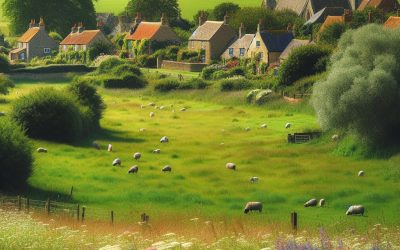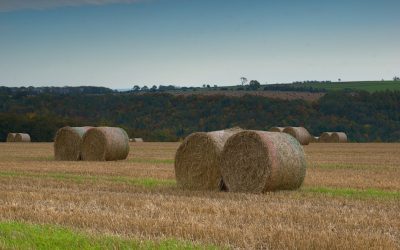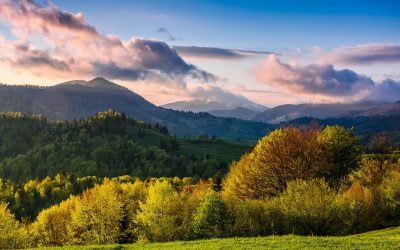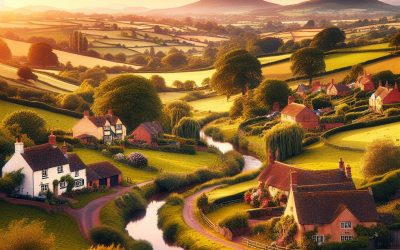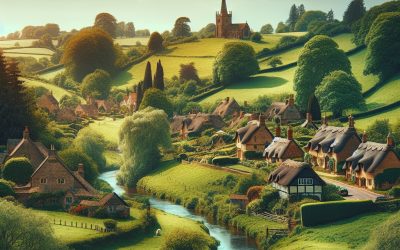World Geography
Geography is the study of the Earth’s landscapes, environments, and the relationships between people and their surroundings. It encompasses both the physical aspects of the Earth, such as its landforms, bodies of water, and climate, as well as the human aspects, including population distribution, cultures, and economies. World geography is a broad field that seeks to understand the complexities of our planet and how humans interact with it. By studying world geography, we can gain a deeper appreciation for the diversity of our planet and the interconnectedness of its various regions.
Geography is a multidisciplinary field that draws on elements of physical science, social science, and humanities. It involves the use of maps, spatial analysis, and geographic information systems (GIS) to understand the Earth’s surface and the processes that shape it. World geography also encompasses the study of human geography, which examines the ways in which people and their activities are distributed across the Earth. By understanding world geography, we can better appreciate the environmental, cultural, and economic challenges facing different regions of the world. This knowledge is crucial for addressing global issues such as climate change, resource management, and international development.
The Five Oceans and Seven Continents
The Earth’s surface is divided into five major oceans: the Pacific, Atlantic, Indian, Southern (or Antarctic), and Arctic Oceans. These vast bodies of water play a crucial role in regulating the Earth’s climate and supporting diverse marine ecosystems. The oceans also serve as important transportation routes and a source of food and other natural resources for human societies around the world.
In addition to the oceans, the Earth’s landmasses are divided into seven continents: Africa, Antarctica, Asia, Europe, North America, Australia (or Oceania), and South America. Each continent has its own unique physical and cultural characteristics, shaped by millions of years of geological processes and human history. From the deserts of Africa to the rainforests of South America, the continents offer a rich tapestry of landscapes and environments for exploration and study.
Major Mountain Ranges and Deserts
The Earth’s surface is also marked by major mountain ranges and deserts that have shaped the planet’s physical and cultural landscapes. The Himalayas, for example, are the highest mountain range in the world and are home to diverse ecosystems and cultures in countries such as India, Nepal, and Bhutan. The Andes in South America, the Rockies in North America, and the Alps in Europe are other prominent mountain ranges that have influenced human settlement patterns and economic activities.
Deserts cover about one-third of the Earth’s land surface and are characterized by low precipitation and extreme temperatures. The Sahara Desert in Africa is the largest hot desert in the world, while the Gobi Desert in Asia is one of the largest cold deserts. Deserts are not only home to unique flora and fauna but have also been important trade routes and cultural crossroads throughout history.
Climate Zones and Biomes
The Earth’s climate is influenced by a variety of factors, including latitude, altitude, ocean currents, and prevailing winds. As a result, the planet is divided into different climate zones, each with its own characteristic weather patterns and ecosystems. The equator, for example, experiences a tropical climate with high temperatures and heavy rainfall, while the polar regions have a cold and dry climate.
These climate zones give rise to different biomes, or large ecological areas characterized by distinct plant and animal communities. The tropical rainforest biome, found near the equator, is home to a diverse array of species and is vital for regulating the Earth’s climate. The grasslands biome, found in regions such as the African savannah and North American prairies, supports grazing animals and has been important for human agriculture throughout history.
Human Geography and Population Distribution
Human geography examines the ways in which people and their activities are distributed across the Earth’s surface. It encompasses topics such as population growth, migration patterns, urbanization, and cultural diversity. Understanding human geography is crucial for addressing global challenges such as poverty, inequality, and environmental degradation.
Population distribution is uneven across the world, with some regions experiencing rapid population growth while others are declining. The majority of the world’s population lives in Asia, particularly in countries such as China and India. Urban areas are also growing rapidly, with more than half of the world’s population now living in cities. This trend has significant implications for infrastructure development, resource management, and social inequality.
Historical and Cultural Geography
Historical geography examines how human activities have shaped the Earth’s landscapes over time. It explores topics such as colonialism, trade routes, and the rise and fall of empires. Cultural geography focuses on how human cultures have developed in different regions of the world and how they interact with their environments.
The Silk Road, for example, was an ancient trade route that connected China with Europe and facilitated the exchange of goods, ideas, and technologies across Eurasia. This historical trade route had a profound impact on the development of cultures and economies along its path. Similarly, cultural geographers study how different societies have adapted to their environments through practices such as agriculture, architecture, and religious beliefs.
The Importance of Geographic Knowledge
Geographic knowledge is crucial for addressing global challenges such as climate change, resource management, and international development. By understanding world geography, we can better appreciate the environmental, cultural, and economic challenges facing different regions of the world. This knowledge is crucial for addressing global issues such as climate change, resource management, and international development.
Geographic knowledge also helps us to understand our interconnectedness with other regions of the world. By studying world geography, we can gain a deeper appreciation for the diversity of our planet and the interconnectedness of its various regions. This understanding can foster a sense of global citizenship and empathy for people from different cultures and backgrounds.
In conclusion, world geography is a complex and multifaceted field that encompasses both physical and human aspects of the Earth’s landscapes. By studying world geography, we can gain a deeper appreciation for the diversity of our planet and the interconnectedness of its various regions. This knowledge is crucial for addressing global challenges such as climate change, resource management, and international development. It also helps us to understand our interconnectedness with other regions of the world and fosters a sense of global citizenship.
FAQs
What is world geography?
World geography is the study of the Earth’s landscapes, environments, and the relationships between people and their environments. It encompasses the physical features of the Earth, as well as the human activity that takes place on it.
Why is world geography important?
World geography is important because it helps us understand the world around us. It provides insights into the physical and human processes that shape our planet, and helps us make informed decisions about how to interact with our environment.
What are the main branches of world geography?
The main branches of world geography include physical geography, which focuses on the Earth’s natural features and processes, and human geography, which examines the relationships between people and their environments.
How does world geography impact our daily lives?
World geography impacts our daily lives in numerous ways, from influencing the weather and climate we experience, to shaping the availability of natural resources and influencing the distribution of populations and cultures around the world.
What are some key concepts in world geography?
Key concepts in world geography include location, place, human-environment interaction, movement, and region. These concepts help geographers understand and interpret the world around them.
Suffolk, England
Located on the eastern coast of England, Suffolk is a county known for its rich history, natural beauty, and cultural offerings. With its picturesque landscapes, charming towns and villages, and vibrant arts scene, Suffolk has something to offer every visitor. Whether you’re interested in exploring historical landmarks, enjoying outdoor activities, or indulging in delicious local cuisine, Suffolk has it all. Suffolk has a long and fascinating history that dates back to Anglo-Saxon times. The county was once part of the Kingdom of East Anglia and played a significant role in the development of England. Today, visitors can explore the remnants of this rich history through the county’s many historical sites and landmarks. In addition to its historical significance, Suffolk is also known for its natural beauty. From its stunning coastline to its rolling countryside, the county offers a variety of landscapes to explore. Whether you prefer coastal walks, countryside trails, or nature reserves, Suffolk has plenty of options for outdoor enthusiasts. Summary Suffolk, England is a land of heritage and beauty, with a rich history and stunning natural landscapes. From Anglo-Saxon times to the present day, Suffolk has a fascinating history waiting to be discovered. Coastal walks, countryside trails, and nature reserves offer endless opportunities to explore the natural beauty of Suffolk. Historic towns and picturesque villages are among the best places to visit in Suffolk. Suffolk’s cultural scene is vibrant, with art, music, theatre, and festivals to enjoy throughout the year. Discovering the Rich History of Suffolk: From Anglo-Saxon Times to the Present Day Suffolk has a long and storied history that spans over a thousand years....
Staffordshire, England
Located in the heart of England, Staffordshire is a county with a rich history and vibrant culture. It is bordered by Cheshire to the north, Derbyshire and Leicestershire to the east, Warwickshire to the south, and Shropshire to the west. The county has a diverse landscape, ranging from the stunning natural beauty of the Peak District to the industrial heritage of the Potteries. Staffordshire is home to many notable landmarks and attractions. One of the most famous is Alton Towers, a world-renowned theme park that attracts visitors from all over the globe. The county is also known for its historic towns and cities, such as Lichfield and Tamworth, which are steeped in history and offer a wealth of archaeological sites to explore. With its mix of natural beauty, industrial heritage, and cultural attractions, Staffordshire has something for everyone. Summary Staffordshire is a county with a rich history and culture, offering a variety of experiences for visitors. The natural beauty of Staffordshire can be explored through the Peak District and Cannock Chase. The industrial heritage of Staffordshire can be discovered through the Potteries and other sites. Archaeological sites in Staffordshire, such as Lichfield and Tamworth, offer fascinating insights into the past. Staffordshire’s vibrant arts scene includes museums, galleries, and theatres, providing entertainment for all. Exploring the Natural Beauty of Staffordshire: From the Peak District to Cannock Chase The Peak District is a stunning national park that spans across several counties, including Staffordshire. It is known for its rugged landscapes, picturesque villages, and outdoor activities. Visitors can explore the park on foot or by bike, taking in the breathtaking views...
Yorkshire, England
Located in the northern part of England, Yorkshire is the largest county in the country. With an area of over 11,000 square kilometers, it is home to a population of around 5 million people. Yorkshire is known for its diverse landscapes, ranging from rolling hills and picturesque dales to rugged coastlines and vibrant cities. It is a land of beauty and contrasts, offering something for everyone. Yorkshire has long been renowned for its natural beauty and diverse landscapes. From the stunning Yorkshire Dales National Park to the rugged coastline along the North Sea, there is no shortage of breathtaking scenery to explore. The county is also home to several Areas of Outstanding Natural Beauty, including the North York Moors and the Howardian Hills. Whether you enjoy hiking through lush green valleys, cycling along scenic country lanes, or simply taking in the views from a cozy pub, Yorkshire has it all. Summary Yorkshire is a diverse and beautiful region in the north of England. The area has a rich history, from Roman times to the Industrial Revolution. The Yorkshire Dales offer stunning natural scenery and outdoor activities. The Yorkshire coast boasts beaches, cliffs, and charming seaside towns. Leeds, Sheffield, and York are vibrant cities with plenty to see and do. Yorkshire’s Rich History: From Roman Times to the Industrial Revolution Yorkshire has a rich and fascinating history that spans thousands of years. The county was first inhabited by the Romans, who established a number of settlements and built roads throughout the region. The Vikings also left their mark on Yorkshire, with their influence still evident in place names and...
West Yorkshire, England
West Yorkshire is a county located in the northern part of England. It is one of the metropolitan counties and is bordered by South Yorkshire, North Yorkshire, East Riding of Yorkshire, Lancashire, and Greater Manchester. The county has a population of approximately 2.3 million people, making it one of the most populous counties in England. Summary West Yorkshire is a county in England, located in the north of the country. The area has a rich history, with evidence of human settlement dating back to the Bronze Age. West Yorkshire is known for its diverse geography, including rolling hills, valleys, and moors. The region has a strong cultural identity, with traditions such as brass band music and Yorkshire pudding. West Yorkshire has a diverse economy, with industries ranging from manufacturing to finance and tourism. History of West Yorkshire West Yorkshire has a rich history that dates back to ancient times. The area was settled by the Celts and later by the Romans, who established a fort at Ilkley. However, it was during the industrial revolution in the 18th and 19th centuries that West Yorkshire truly flourished. The county became a major center for the textile industry, with cities like Leeds and Bradford becoming renowned for their woolen mills and textile factories. The textile industry played a significant role in shaping the landscape and economy of West Yorkshire. The county became known as the “wool capital of the world” and was responsible for producing a large portion of Britain’s textiles. The industrial revolution brought about rapid urbanization, with towns and cities growing rapidly to accommodate the influx of workers. West Yorkshire...
South Yorkshire, England
South Yorkshire is a county located in the northern part of England. It is bordered by West Yorkshire to the north, North Yorkshire to the east, Derbyshire to the south, and Nottinghamshire to the west. The county is known for its rich industrial heritage, stunning landscapes, and vibrant cultural scene. South Yorkshire is home to several major cities and towns, including Sheffield, Rotherham, Barnsley, and Doncaster. These urban centers have played a significant role in the history and development of the region. South Yorkshire holds great importance in England due to its historical significance and economic contributions. During the Industrial Revolution, the county became a major hub for coal mining, steel production, and manufacturing. The region’s industrial prowess helped fuel the growth of the British Empire and played a crucial role in shaping the country’s economy. Today, South Yorkshire continues to be an important center for industry and innovation, with a diverse economy that includes manufacturing, services, and tourism. Summary South Yorkshire is a region in England known for its industrial heritage and stunning natural landscapes. The area has a rich history, from the Industrial Revolution to modern times, and is home to many historic landmarks and museums. South Yorkshire is characterized by its rolling hills, winding rivers, and picturesque valleys, making it a popular destination for outdoor enthusiasts. The region is home to several major cities and towns, including Sheffield, Rotherham, Barnsley, and Doncaster, each with its own unique character and attractions. South Yorkshire is a hub of culture and tradition, with a thriving music and arts scene, as well as numerous festivals and events throughout the year....
West Sussex, England
West Sussex is a county located in the south of England, known for its rich history, stunning natural landscapes, and vibrant cultural scene. This blog post will provide a comprehensive overview of all that West Sussex has to offer, from its historical sites and natural beauty to its top places to visit, cultural offerings, culinary delights, sporting activities, education system, business environment, transport options, and community spirit. Whether you are planning a visit or considering making West Sussex your home, this guide will give you a detailed insight into what makes this county so special. Summary West Sussex has a rich history dating back to Roman times, with many historic sites to explore. The countryside and coastline of West Sussex offer stunning natural beauty, perfect for outdoor activities. From charming villages to bustling towns, West Sussex has a variety of places to visit and explore. The cultural scene in West Sussex is vibrant, with art, music, and theatre events happening throughout the year. West Sussex is known for its local specialties and top restaurants, offering a diverse food and drink scene. The History of West Sussex: From Roman Times to the Present Day West Sussex has a fascinating history that dates back to Roman times. The Romans occupied the area and built several settlements, including the city of Noviomagus Reginorum (now known as Chichester). The county was later settled by the Anglo-Saxons and became part of the Kingdom of Sussex. Over the centuries, West Sussex played a significant role in English history, with events such as the Norman Conquest and the English Civil War leaving their mark on the...
Worcestershire, England
Worcestershire is a county located in the West Midlands region of England. It is bordered by the counties of Warwickshire, Gloucestershire, Herefordshire, Shropshire, Staffordshire, and the West Midlands. The county has a population of approximately 590,000 people. Worcestershire is known for its rich history and cultural heritage, with evidence of human habitation dating back to the Stone Age. Summary Worcestershire is a county in England known for its beautiful countryside and rich history. From Roman times to the present day, Worcestershire has played an important role in shaping England’s history. The county is home to famous landmarks such as the Worcester Cathedral and the Malvern Hills. Worcestershire is also known for its delicious cuisine, including the famous Worcestershire sauce. Visitors can explore the countryside through walking, cycling, and other outdoor activities, and enjoy the county’s sporting heritage through cricket, rugby, and horse racing. The History of Worcestershire: From Roman Times to the Present Day Worcestershire has a long and fascinating history that dates back to Roman times. The Romans established a settlement in the area known as “Viroconium Cornoviorum,” which was an important trading center. After the departure of the Romans, the area was settled by the Anglo-Saxons and became part of the Kingdom of Mercia. Throughout its history, Worcestershire has been involved in key historical events. During the English Civil War, the county was a stronghold for the Royalists, and the Battle of Worcester in 1651 was one of the final battles of the war. The Industrial Revolution brought significant changes to Worcestershire, with the development of industries such as ironworks and textiles. Notable figures from Worcestershire’s...
Wiltshire, England
Wiltshire is a county located in the South West region of England. It is bordered by six other counties, including Hampshire, Dorset, Somerset, Gloucestershire, Oxfordshire, and Berkshire. With an area of approximately 3,485 square kilometers, it is one of the largest counties in England. Wiltshire is known for its picturesque countryside, historic sites, and charming market towns. The county is renowned for its natural beauty and rich history. It is home to the iconic Stonehenge, a prehistoric monument that attracts visitors from all over the world. The county also boasts other ancient sites such as Avebury, Silbury Hill, and West Kennet Long Barrow. Wiltshire’s history dates back thousands of years, with evidence of human habitation from the Neolithic period. Throughout the centuries, it has played a significant role in English history, from the Civil War to the Industrial Revolution. Summary Wiltshire is a picturesque county located in South West England. The history of Wiltshire dates back to prehistoric times and includes famous landmarks such as Stonehenge and Salisbury Cathedral. Wiltshire’s natural beauty can be explored through its countryside, rivers, and wildlife. Top tourist attractions in Wiltshire include Stonehenge, Salisbury Cathedral, and other historic landmarks. Wiltshire offers traditional recipes and local specialties for food and drink, as well as museums, galleries, and festivals for arts and culture. History of Wiltshire: From Prehistoric Times to the Present Day Wiltshire has a fascinating history that spans thousands of years. The county is home to some of the most important prehistoric sites in Europe. Stonehenge, located on Salisbury Plain, is perhaps the most famous of these sites. This ancient stone circle dates...
Somerset, England
Located in the South West of England, Somerset is a county known for its stunning landscapes, rich history, and charming villages. It is bordered by the counties of Devon, Dorset, Wiltshire, and Gloucestershire, and is home to a diverse range of attractions and highlights. From its rolling countryside and picturesque coastal towns to its famous landmarks and cultural scene, Somerset offers something for everyone. One of the main draws of Somerset is its natural beauty. The county is home to several Areas of Outstanding Natural Beauty, including the Mendip Hills, Quantock Hills, and Exmoor National Park. These areas offer breathtaking views, diverse wildlife, and a range of outdoor activities such as hiking, cycling, and wildlife watching. Somerset’s countryside is also known for its unique flora and fauna, with rare species such as the Exmoor pony and the Cheddar pink flower. In addition to its natural beauty, Somerset is also home to a number of charming coastal towns and beautiful beaches. Towns such as Minehead, Watchet, and Burnham-on-Sea offer a traditional seaside experience with their sandy beaches, quaint shops, and fishing harbours. Visitors can enjoy activities such as swimming, surfing, and fishing, or simply relax and take in the stunning coastal landscapes. Summary Somerset is a scenic county located in South West England. The history of Somerset dates back to Roman times and has evolved into the modern era. The natural beauty of Somerset is best explored by venturing into the countryside. Somerset’s coastal towns and beaches offer a perfect seaside getaway. Somerset is home to famous landmarks such as Glastonbury Tor and Wells Cathedral. History of Somerset: From...
Westmorland, England
Westmorland, located in the North West of England, is a county with a rich and fascinating history. It was historically part of the Kingdom of Northumbria and later became an independent county in the 12th century. Westmorland played a significant role in England‘s history, particularly during the medieval period when it was a stronghold for the Norman invaders. The county’s name is derived from the Old English words “west” and “mor,” meaning “west moorland.” This reflects the county’s geography, which is characterized by rolling hills and moorland. Westmorland was known for its strategic location, situated between the Scottish border and the rest of England. It was often a battleground during conflicts between the English and Scottish kingdoms. Summary Westmorland, England has a rich historical background dating back to the Roman era. Visitors to Westmorland can expect a temperate climate with mild temperatures and occasional rainfall. Westmorland boasts a diverse cultural heritage, including castles, museums, and art galleries. The region’s agricultural and industrial history is evident in its many farms, mills, and factories. Nature lovers will enjoy exploring Westmorland’s national parks and scenic walks, including the Lake District and Yorkshire Dales. Geography and Climate of Westmorland: A Guide for Visitors Westmorland is located in the North West of England and is bordered by Cumberland to the north, Yorkshire to the east, Lancashire to the south, and Scotland to the west. It covers an area of approximately 1,400 square miles, making it one of the smaller counties in England. The climate in Westmorland is typically temperate, with mild summers and cool winters. The county experiences a fair amount of rainfall throughout...
Warwickshire, England
Warwickshire, located in the heart of England, is a county steeped in history and natural beauty. From its rich cultural heritage to its stunning countryside, Warwickshire offers a wide range of attractions and activities for visitors to enjoy. In this blog post, we will explore the history of Warwickshire, its beautiful countryside, its cultural heritage, famous landmarks, festivals and events, culinary delights, sporting scene, shopping and entertainment options, education opportunities, and transport links. Whether you are a history buff, nature lover, foodie, sports enthusiast, or simply looking for a great place to shop and be entertained, Warwickshire has something for everyone. Summary Warwickshire has a rich history dating back to Roman times, with many historic sites to explore. The county boasts beautiful countryside, including parks, gardens, and nature reserves. Cultural heritage is abundant in Warwickshire, with museums, art galleries, and historic sites to discover. Famous landmarks such as castles, cathedrals, and stately homes are a must-see for visitors. Warwickshire celebrates its local traditions and culture through festivals and events throughout the year. The History of Warwickshire: From Roman Times to the Present Day Warwickshire has a long and fascinating history that dates back to Roman times. The county was once part of the Roman province of Britannia and was home to several important Roman settlements. The most famous of these is the town of Alcester, which was an important trading center during Roman times. Throughout its history, Warwickshire has been the site of many key historical events and has been home to several influential figures. One such figure is William Shakespeare, who was born in Stratford-upon-Avon in 1564....
Tyne and Wear, England
Tyne and Wear is a metropolitan county located in the northeast of England. It is made up of five boroughs: Newcastle upon Tyne, Gateshead, North Tyneside, South Tyneside, and Sunderland. The region is known for its rich history, vibrant culture, and stunning landscapes. Tyne and Wear holds great importance in the UK due to its economic significance and cultural contributions. The region has a strong industrial heritage and has played a crucial role in the country’s history. It is also home to several prestigious universities and has a thriving arts and music scene. With its diverse range of attractions and landmarks, Tyne and Wear attracts visitors from all over the world. Summary Tyne and Wear is a metropolitan county in North East England, consisting of five boroughs. The area has a rich history dating back to Roman times, with notable landmarks such as Hadrian’s Wall. Tyne and Wear boasts a diverse range of geographical features, including rivers, coastline, and landscapes. The economy and industry in the area have evolved over time, with a focus on shipbuilding, coal mining, and now service industries. Tyne and Wear has a vibrant culture and society, with a thriving arts and music scene, as well as numerous festivals throughout the year. History of Tyne and Wear – From Roman Times to Modern-Day The history of Tyne and Wear dates back to Roman times when the area was occupied by the Romans who built a fort on the banks of the River Tyne. The region flourished during the medieval period with the growth of trade and the establishment of Newcastle as a major port....
